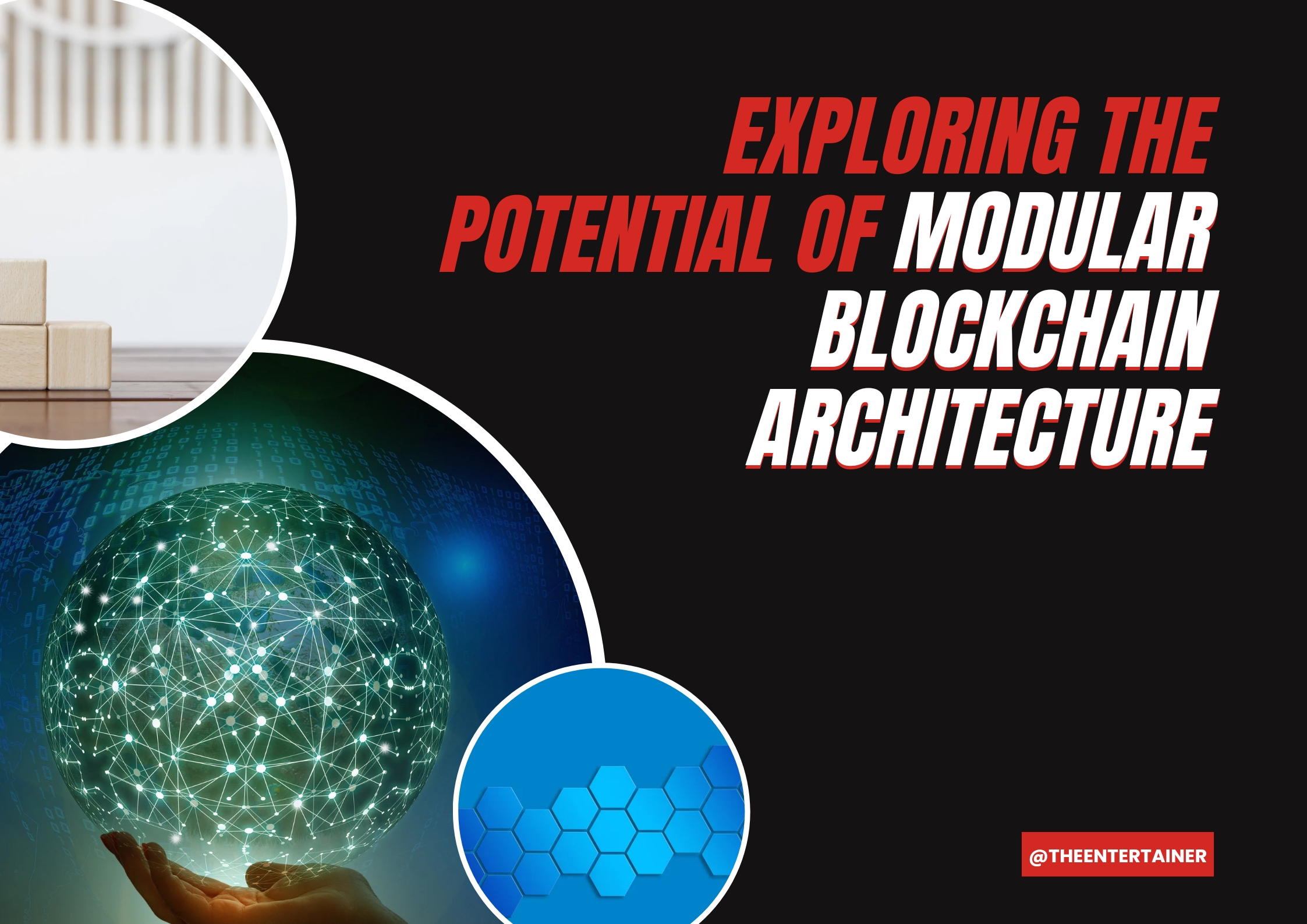**Introduction:**
The blockchain landscape has witnessed exponential growth since its inception, with developers continuously striving to overcome the challenges of scalability, security, and decentralization. Traditional monolithic blockchain models, characterized by a single chain handling all tasks, often encounter limitations in scalability, upgradability, and hardware requirements for validator nodes. In response, the concept of modular blockchains has emerged as a promising alternative, offering a multi-layered approach to optimize network scalability, security, and customization.

[Canva](https://www.canva.com/design/DAF5-OPvKC8/_uGaPfMA1trtYq-uOrvURg/edit?utm_content=DAF5-OPvKC8&utm_campaign=designshare&utm_medium=link2&utm_source=sharebutton)
**Understanding Modular Blockchains:**
Modular blockchains represent a departure from monolithic models by adopting a multi-layered architecture that divides primary tasks into specialized functions. This approach aims to enhance scalability and customization while preserving decentralization and security. By assigning specific functions to different layers, modular blockchains create a more efficient and flexible system.
**Operational Mechanisms:**
Modular blockchains typically specialize in four main functions: execution, settlement, consensus, and data availability. Execution involves processing transactions, settlement secures transaction destinations, consensus validates transaction authenticity, and data availability refers to the storage of transaction data. This modular design enables greater flexibility and efficiency, offering a promising solution to the blockchain scalability trilemma.
Various techniques are employed to implement modular blockchains, including rollups, validium, and sovereign rollups. Rollups serve as an execution layer, processing transactions and publishing data to a layer-1 network (L1). Validium, a variation of rollups, processes transactions off-chain before submitting the data to the L1, relying on a network of Proof of Stake validators. Sovereign rollups act as both an execution and settlement layer, publishing data blocks directly onto the rollup without requiring L1 smart contracts for validation.

[Freepik](https://www.freepik.com/free-vector/employees-challenging_5259902.htm#fromView=search&page=1&position=3&uuid=fdc884b1-6ad8-4823-8a53-41ed88f4da63)
**Advantages and Disadvantages:**
Modular blockchain architecture offers several key benefits over monolithic designs, including enhanced scalability, flexibility, and interoperability. By offloading resource-intensive tasks to separate layers, modular blockchains achieve greater overall throughput without compromising decentralization. Moreover, the flexibility of modular base layers promotes interoperability among multiple layer-1 and layer-2 chains, encouraging the development of a broader range of decentralized applications (DApps). Additionally, developers have the freedom to choose the virtual machine that best suits their needs, contributing to a more adaptable and developer-friendly environment.
However, building on modular blockchains can be more complex compared to monolithic counterparts, posing a steep learning curve for users and developers. Furthermore, modular networks are not as battle-tested as established chains like Ethereum or Bitcoin, raising concerns about their resilience under real-world, high-traffic conditions. The early stage of development for modular blockchains introduces uncertainties about their long-term stability and effectiveness.

[Freepik](https://www.freepik.com/free-vector/automated-business-process-concept-server-room-rack-data-center-database-icon_3628749.htm#fromView=search&page=1&position=1&uuid=3d9cc2ce-b3ce-4cbd-bdbf-4ee622f6e883)
**Examples of Modular Blockchains:**
Celestia is a modular network that enables blockchains to scale securely without compromising performance. By implementing features such as data availability sampling and sovereign rollups, Celestia facilitates quick and efficient data availability while maintaining security.
Dymension operates a network of fast and easily deployable modular blockchains called RollApps. Similar to a traditional full-stack web application, Dymension coordinates the ecosystem as the back-end, with RollApps serving as the front-end for user interaction. Additionally, data availability networks function as databases, providing data whenever necessary.
**Conclusion:**
Modular blockchains hold significant promise for fostering a more efficient and secure decentralized ecosystem. As development teams continue to focus on overcoming the scalability trilemma, the application of modularity in the crypto space is expected to expand. By addressing the limitations of traditional monolithic models, modular blockchains may unlock new possibilities for decentralized finance (DeFi) and broader blockchain adoption.